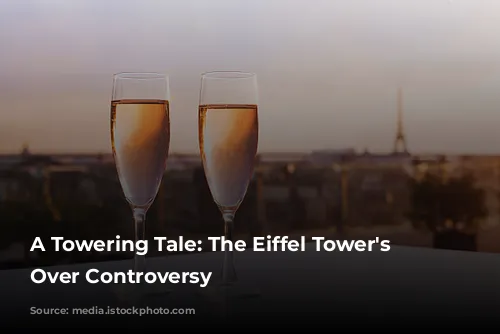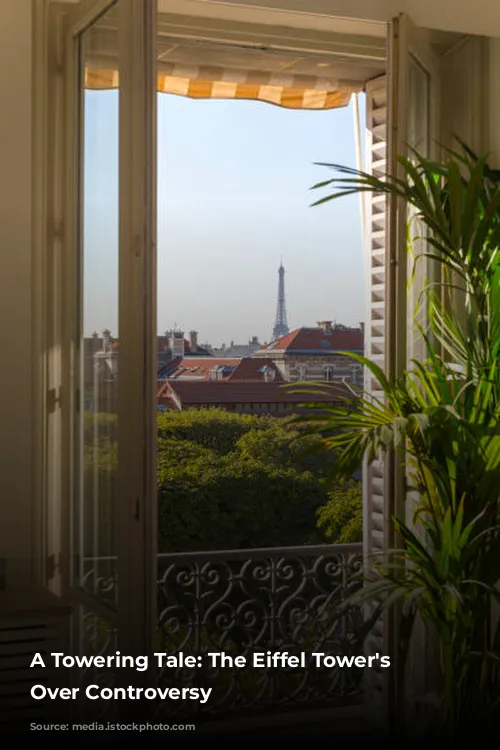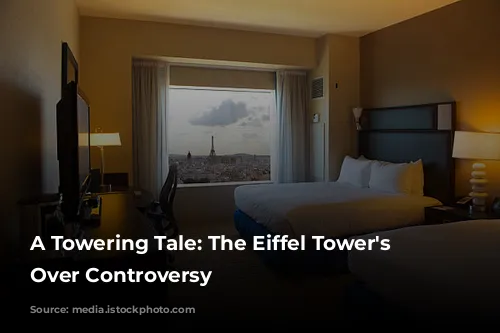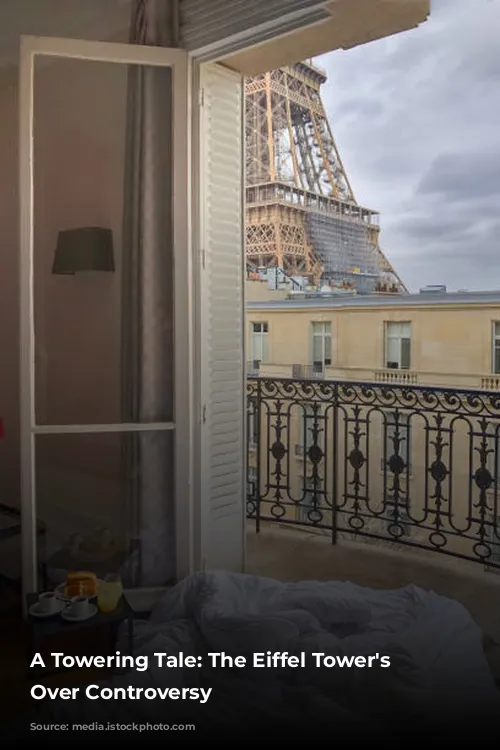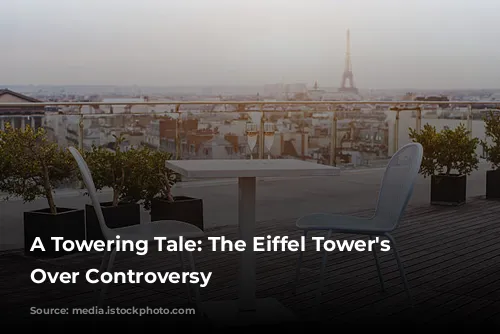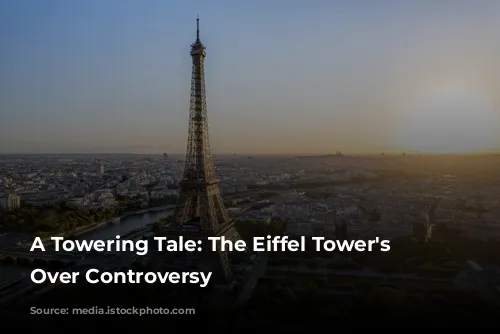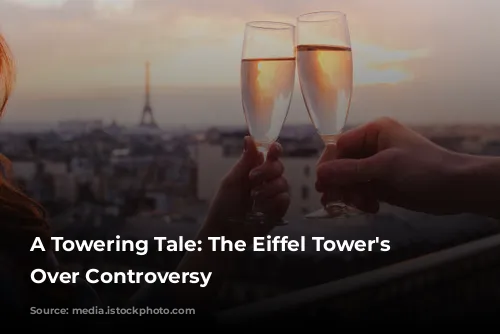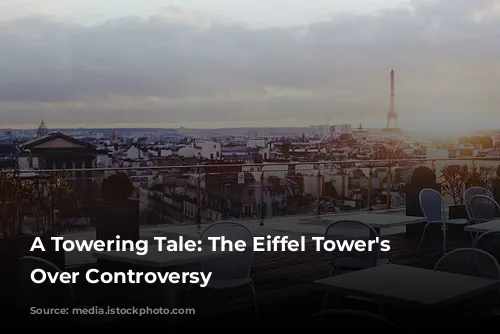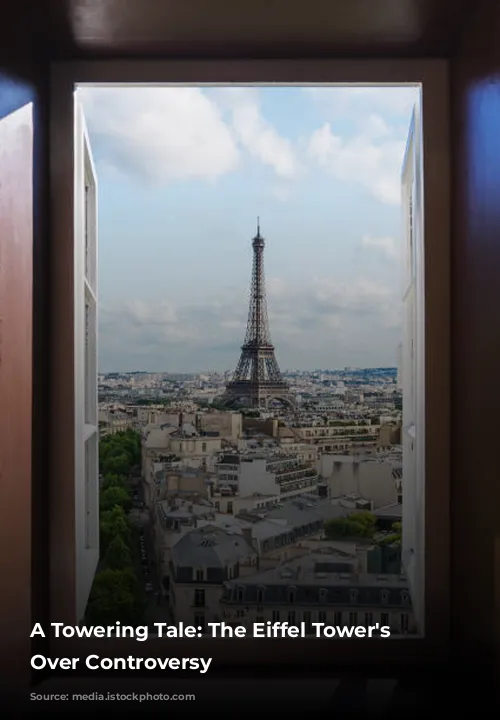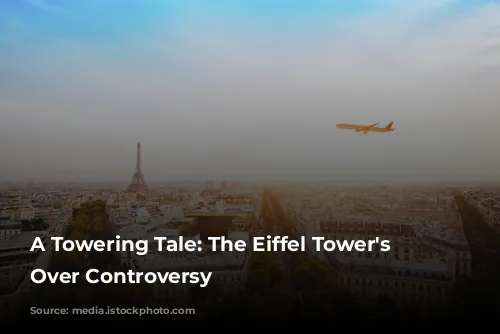The Eiffel Tower, a symbol of Paris, stands tall as a testament to the vision of Gustave Eiffel. However, its journey from concept to iconic landmark was paved with fierce debate and opposition. In 2023, as we commemorate the centenary of Eiffel’s death, let’s delve into the battles he fought to erect his extraordinary creation, the Eiffel Tower.
In the late 19th century, the 1889 World Exhibition served as a stage for a competition that would shape Paris’s skyline. Gustave Eiffel dreamed of a 1000-foot metal tower, a beacon of France’s engineering prowess. But he had a formidable opponent in Jules Bourdais, a renowned architect whose proposal, the Sun Tower, envisioned a towering granite structure topped with a radiant beacon.
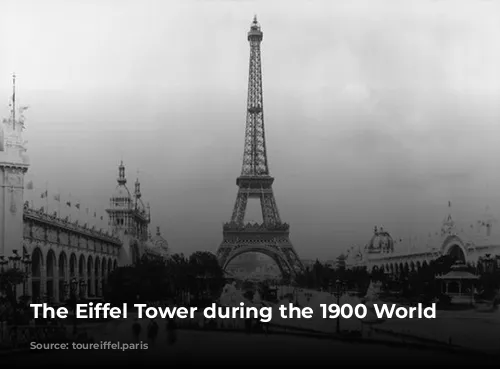
Clash of Titans: Eiffel vs. Bourdais
The rivalry was a clash of styles: stone versus iron, architect versus engineer, classic versus modern. The media became a battleground, with both contenders rallying their supporters. Eiffel emphasized the feasibility of his tower, highlighting its realistic timeframe and controlled cost. He also appealed to patriotism, arguing the tower would serve “essential services to science and national defense.”
Bourdais countered with the grandeur of his stone tower, but doubts lingered about its practicality. The project seemed financially unrealistic and challenging to execute. In 1886, a turning point occurred when Bourdais received support from Prime Minister Charles de Freycinet. However, Eiffel’s perseverance paid off. He convinced Edouard Lockroy, Minister for Commerce, to champion his cause, promising to finance the entire project in exchange for a contract to operate the tower.
The tide turned in Eiffel’s favor when the Minister announced a competition for building attractions for the World Exhibition. The contest’s specifications included “a 1000-foot iron tower with a square base with sides of 410 feet,” seemingly tailored for Eiffel’s vision. Bourdais, caught off guard, entered with a revised Sun Tower, replacing stone with iron. But Eiffel’s design prevailed, securing him the coveted contract.
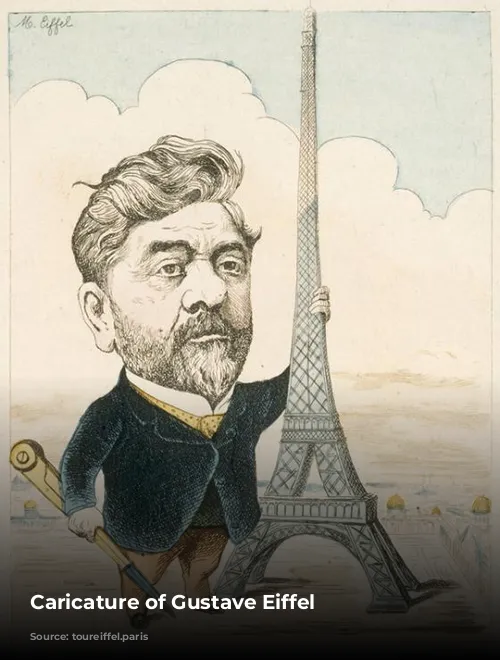
Artistic Opposition: A Towering Controversy
Eiffel’s triumph, however, ignited fierce criticism. Architects were outraged that an engineer was chosen for such a prestigious project. As construction commenced, the Parisian art scene erupted in protest. On February 14, 1887, “The Protest against the Tower of Monsieur Eiffel” was published in Le Temps newspaper, signed by prominent artists, writers, and architects, including Charles Gounod, Guy de Maupassant, Alexandre Dumas (son), François Coppée, and Charles Garnier. They condemned the tower as “useless and monstrous,” a “Tower of Babel” that would desecrate the city’s beauty.
Eiffel defended his creation, highlighting its structural harmony and the colossal beauty of its form. He argued that the tower’s curves, designed to withstand wind resistance, contributed to its aesthetic appeal. Despite the onslaught of criticism, the Iron Lady continued to rise, a symbol of defiance against artistic snobbery.
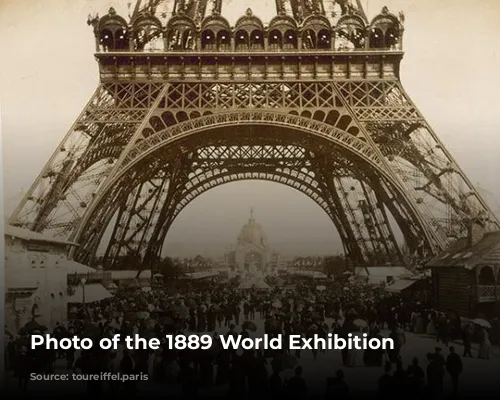
From Loathing to Love: Parisians Embrace the Tower
The construction of the Eiffel Tower was a spectacle that sparked contrasting opinions among Parisians. Artists, particularly vocal in their disdain, fueled the public’s apprehension. The tower was derided as “this belfry skeleton,” “this truly tragic street lamp,” and “this mast of iron gymnasium apparatus.” Even the esteemed author Guy de Maupassant, seemingly repelled by the tower’s appearance, claimed to dine on its first floor, the only place where he wouldn’t have to see it.
However, the supposed hatred for the Tower was largely unfounded. While some residents of the Champ de Mars voiced concerns about their homes, the city’s embrace of the tower proved undeniable. On May 15, 1889, the Eiffel Tower opened to the public, welcoming a surge of visitors from France and around the world. The tower’s triumph over controversy was complete. Even some of its detractors, humbled by its grandeur, offered apologies for their earlier criticisms. The Eiffel Tower, a symbol of modernity, became Paris’s iconic landmark.
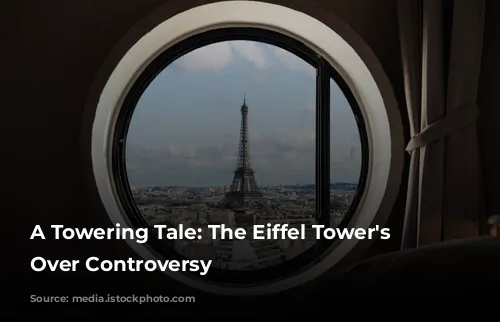
A Tower Saved: The Eiffel Tower’s Enduring Legacy
Despite the world’s admiration for the Eiffel Tower, some detractors remained. In 1894, a new competition for the 1900 World Exhibition included a proposal to modify or even destroy the tower. However, no project was selected, and the tower remained standing, a centerpiece of the spectacular installations of the 1900 World Exhibition.
Though the Eiffel Tower was initially intended to be a temporary structure, destined to be dismantled after 20 years, its enduring appeal and scientific significance saved it from destruction. The tower’s scientific uses, including meteorological observations, wireless telegraphy, aerodynamics research, and experiments with falling bodies, proved invaluable. In 1903, Captain Gustave Ferrié, with Eiffel’s support, established a military network of wireless telegraphy, further cementing the tower’s strategic importance.
On January 1, 1910, the contract granted to Eiffel was renewed for 70 years, securing the tower’s future. The Eiffel Tower, a symbol of Paris, stood as a testament to Gustave Eiffel’s vision and perseverance. Despite the initial controversy, the tower triumphed over opposition, becoming an icon of architectural ingenuity and a beacon of Parisian pride.
